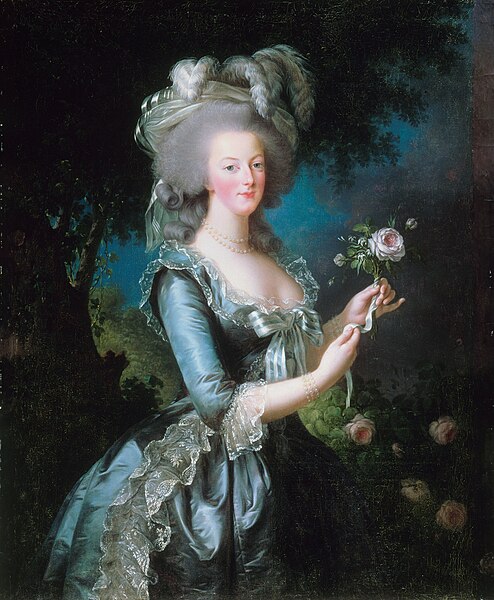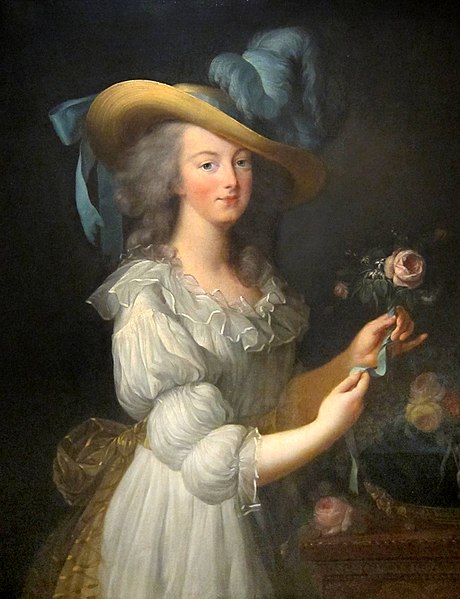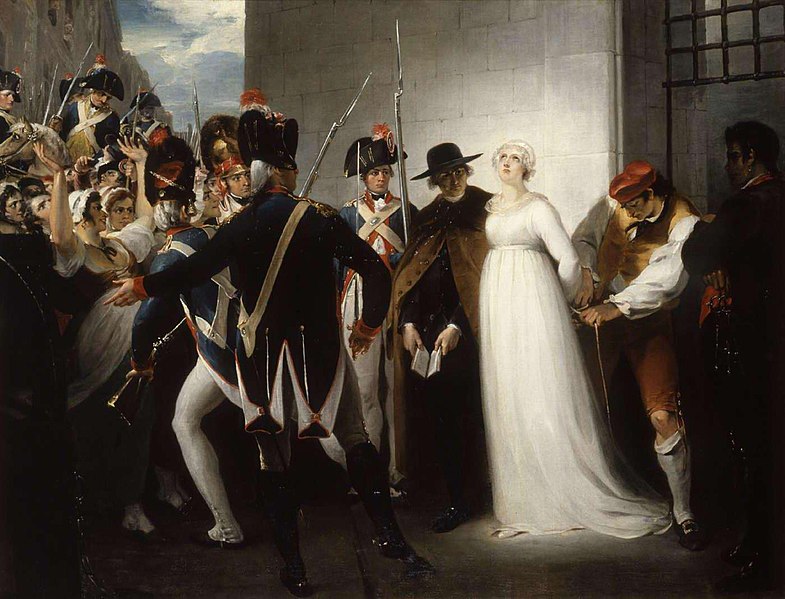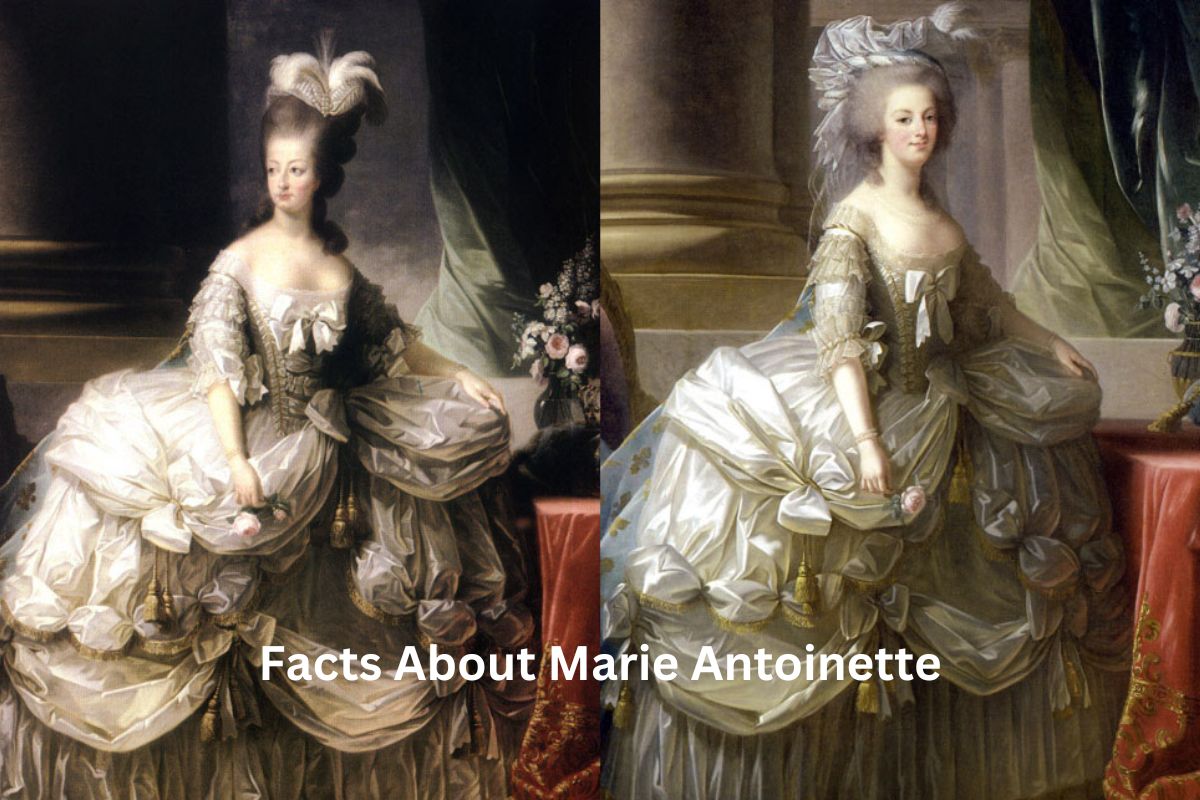Marie Antoinette, born in 1755 as an Austrian archduchess, became a pivotal figure in the history of France. She married King Louis XVI at a young age and assumed the role of queen amidst a backdrop of growing discontent and inequality.
Known for her opulent lifestyle and extravagant fashion, she unwittingly embodied the monarchy’s detachment from the struggles of the French people. As rumors and scandals surrounded her, she became a symbol of privilege and excess.
Her life intersected with the turbulent years of the French Revolution, ultimately leading to her imprisonment, trial, and tragic execution. This brief overview highlights the complex narrative of a woman whose story continues to captivate and resonate through literature, art, and cinema.
Marie Antoinette Facts
1. Born in Vienna, Austria, in 1755
Marie Antoinette was born Maria Antonia Josepha Johanna on November 2, 1755, in Vienna, Austria.
She was the youngest daughter of Holy Roman Emperor Francis I and Empress Maria Theresa. Her upbringing was typical of a royal child, receiving education in history, literature, and languages.

2. Married King Louis XVI of France at 14
In 1770, at the age of 14, Marie Antoinette was married to Louis-Auguste, the future King Louis XVI of France. This marriage was arranged to solidify the political alliance between Austria and France, as both nations were historically rivals.
3. Became the Queen of France in 1774
Upon the death of Louis XV in 1774, Louis XVI and Marie Antoinette ascended to the throne as king and queen of France. Marie Antoinette’s youth and Austrian origin initially made her unpopular with the French court and public.
4. Known for extravagant fashion and spending
Marie Antoinette gained a reputation for her lavish lifestyle, marked by elaborate fashion choices and extravagant spending. She often indulged in luxurious clothing, hairstyles, and accessories.
Also Read: Facts About Louis XVI
Her extravagant tastes, especially during a period of economic hardship for the French population, fueled resentment and further contributed to her negative image in the eyes of the people.
5. Associated with the phrase “Let them eat cake,” though not proven
Marie Antoinette is often associated with the phrase “Let them eat cake,” though historical evidence doesn’t definitively link her to the statement.
The quote, attributed to her in response to the plight of the starving masses who lacked bread, reflects the perception of her as being out of touch with the suffering of the common people.
Also Read: Accomplishments of Marie Antoinette
While the phrase captures the sentiment of her perceived indifference, its accuracy is debated among historians, and there’s no concrete proof that she actually uttered these words.

6. Subject of scandalous affair rumors.
Throughout her time as queen, Marie Antoinette was often the subject of scandalous rumors and gossip. These rumors included allegations of extramarital affairs, particularly with figures like Count Axel von Fersen, a Swedish diplomat.
While historical evidence remains inconclusive about the nature of these relationships, the rumors contributed to her controversial reputation.
7. Resided in the opulent Palace of Versailles
Marie Antoinette and her husband, Louis XVI, resided in the grand Palace of Versailles, located outside Paris. The palace was a symbol of royal power and extravagance.
The couple’s luxurious lifestyle and their distance from the daily struggles of the French populace further fueled resentment toward the monarchy.
8. Mother to four children, only one survived
Marie Antoinette gave birth to four children between 1778 and 1782. Unfortunately, only her daughter Marie-Thérèse Charlotte survived past infancy.
The loss of her children, combined with her inability to produce a male heir, added to the pressures and difficulties she faced.
9. Accused in the diamond necklace affair but acquitted
In the 1780s, Marie Antoinette was falsely implicated in the diamond necklace affair, a scandal involving a costly diamond necklace that was never actually purchased.
The affair tarnished her image further, as some believed she had participated in a plot to defraud the crown jewelers. She was eventually exonerated after a trial, but the damage to her reputation remained.
10. French Revolution erupted in 1789 due to inequality
The years leading up to the French Revolution were marked by economic hardships, social inequality, and political unrest.
Marie Antoinette’s extravagant spending and perceived indifference to the plight of the poor made her a symbol of the monarchy’s excesses.
Her actions, combined with widespread discontent, played a role in igniting the French Revolution in 1789, as people demanded more equitable treatment and a voice in governance.

11. Attempted escape from France in 1791
In June 1791, fearing for their safety as the revolutionary fervor intensified, Marie Antoinette and Louis XVI attempted to escape France. Disguised as commoners, they fled from Paris toward the eastern border.
However, they were recognized and apprehended in Varennes, a small town. Their capture was a significant blow to their already declining credibility and the image of the monarchy.
12. Imprisoned with the family, Louis XVI executed in 1793
Following their capture, the royal family was brought back to Paris and placed under house arrest in the Tuileries Palace. They were stripped of their remaining political power and lived under increasingly restrictive conditions.
The situation deteriorated further with the radicalization of the revolution. In January 1793, Louis XVI was put on trial and subsequently executed by guillotine. This marked a momentous turning point in French history.
13. Marie Antoinette tried, convicted, and executed in 1793
After the execution of Louis XVI, Marie Antoinette was put on trial by the Revolutionary Tribunal. The trial was highly politicized and characterized by numerous accusations against her, ranging from conspiracy to treason.
She was found guilty and sentenced to death. On October 16, 1793, at the age of 37, she was executed by guillotine in the Place de la Révolution in Paris.
14. Seen as a symbol of excess and disconnection from the people
Throughout her life, Marie Antoinette was emblematic of the disconnect between the French monarchy and the general population.
Her extravagant lifestyle and perceived disregard for the hardships faced by the common people fueled resentment and contributed to the revolutionary fervor.
The famous quote “If they have no bread, let them eat cake,” whether accurately attributed to her or not, came to symbolize this perceived indifference.
15. Her story inspired many books, films, and artworks
Marie Antoinette’s life and tragic fate have inspired a plethora of artistic and cultural interpretations. Numerous books, films, and other forms of media have been created to explore her complex personality, the tumultuous times in which she lived, and her ultimate downfall.
One notable example is the 2006 film “Marie Antoinette,” directed by Sofia Coppola, which provided a stylized portrayal of her life and challenges.
